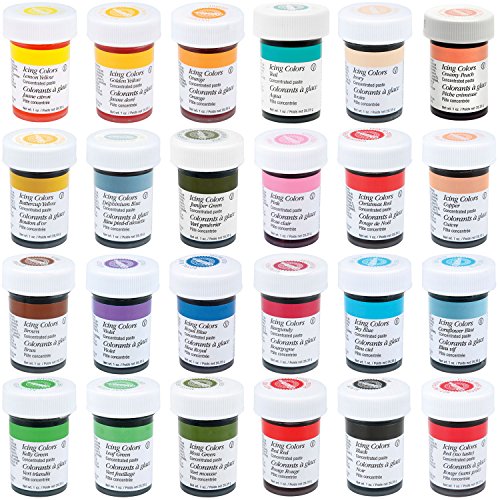You can easily make your own colourful rice for sensory play at home or in your preschool or classroom. This recipe for dying rice doesn’t use rubbing alcohol, making it safer in case you have kids who put things in their mouth. Simply follow our instructions for how to dye rice. 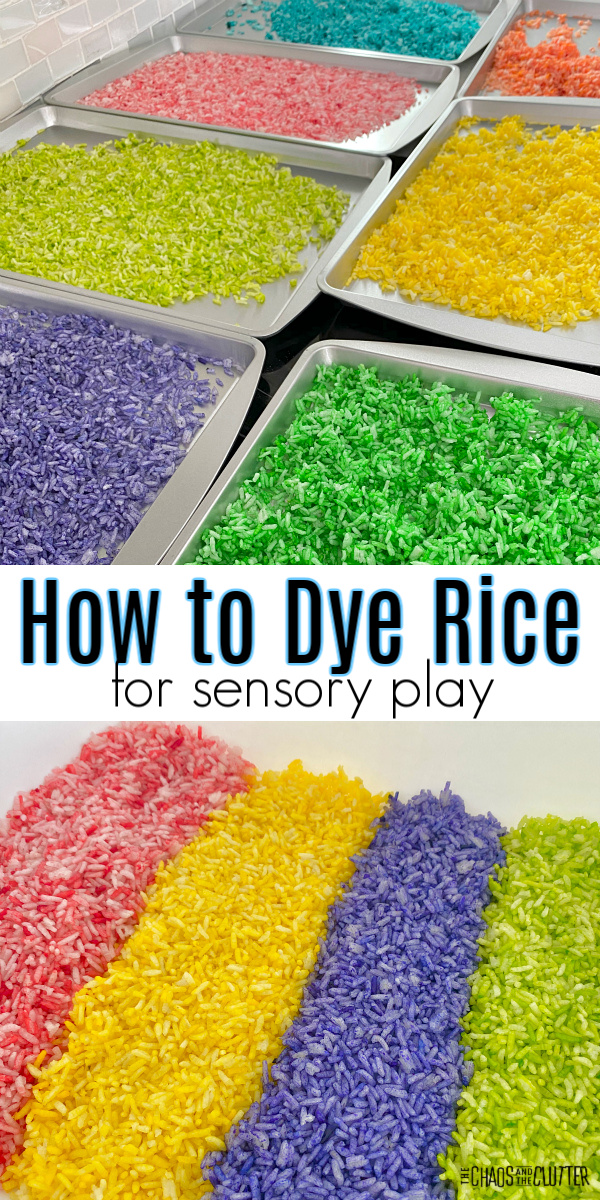 Rice is one of my favourite sensory bin fillers. I always make extra of the green because I find that it looks like grass which makes it versatile for all kinds of sensory bins, bottles, and bags.
Rice is one of my favourite sensory bin fillers. I always make extra of the green because I find that it looks like grass which makes it versatile for all kinds of sensory bins, bottles, and bags.
How to Dye Rice:
Supplies needed:
- 1 cup white rice per colour
- 1/2 tsp. vinegar per colour
- coloured food gel or food colouring
- optional: essential oils*
Wilton Food Gel White Vinegar
White Vinegar White Rice
White Rice
Directions:
- Put 1 cup of rice in a resealable plastic bag.
- Add 1/2 tsp. of vinegar and a bit of the icing gel or food colouring. You won’t get colours that are as vibrant if you use food colouring as opposed to the gel. If you want to add essential oil, add a few drops at this point.
- Seal the bag and shake well.
- Spread the coloured rice out on a baking tray to dry overnight.
- Repeat with other colours.
- Use in sensory play.
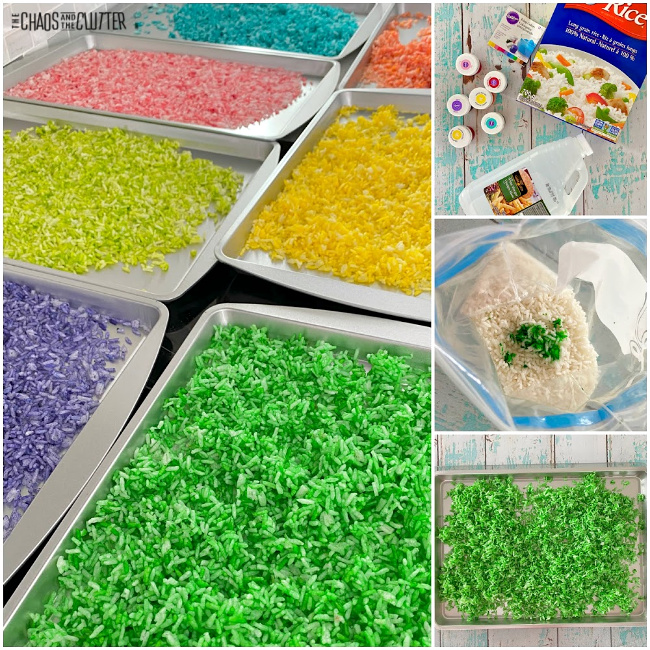 *A note about the essential oils:
*A note about the essential oils:
Adding essential oil to the rice will create an extra sensory element as it creates olfactory (scent) input. There are some scents that are calming such as lavender, jasmine, or rose. Other scents are alerting such as lemon, peppermint, or cinnamon.
You will want to choose the essential oil based on what you are trying to achieve. In a setting where you want your child to be learning, you may want to choose an alerting scent. If you are wanting to create more calming sensory play opportunities, then you’ll want to choose a calming scent for the rice. 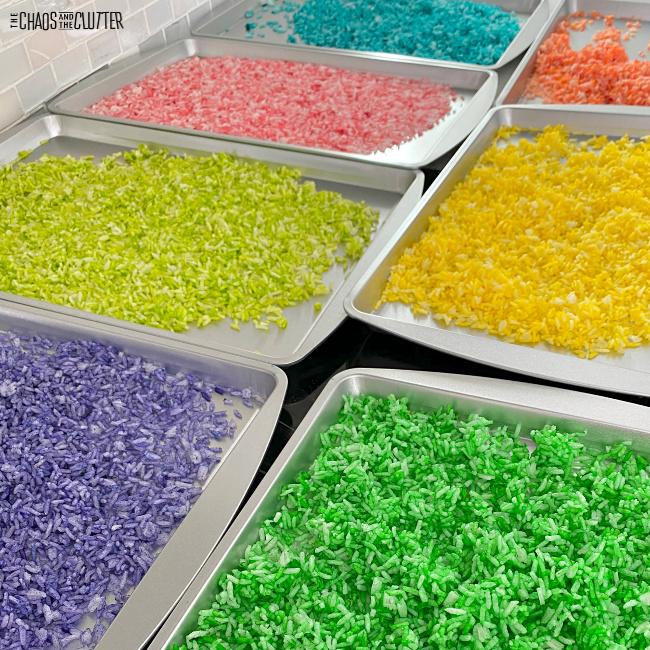 When not in use, be sure to store your coloured rice in a sealed plastic bag or an airtight container. You can reuse it over and over again as long as it’s properly stored.
When not in use, be sure to store your coloured rice in a sealed plastic bag or an airtight container. You can reuse it over and over again as long as it’s properly stored.
Ways to use coloured rice in sensory play:
Coloured rice can be used in a variety of sensory play activities. If you use more than one colour at a time, the colours will obviously combine through play and create a different look altogether. That’s not a bad thing, but if you have a child prone to getting upset by things not looking the way they think they should, this is something you should warn them about before they begin to engage with their sensory play.
Here are some ideas:
- Use coloured rice in a sensory bottle along with some small buttons or toys to create a Seek and Find Discovery Bottle.
- Create a rainbow effect by lining up different colours in a sensory tub. Add some scoops and funnels for kids to explore and work on their fine motor skills by scooping and pouring.
- Use green rice to look like grass for insect, butterfly, Spring, or other outdoor themed sensory bins.
- Fill a resealable bag about halfway full with coloured rice and then add some small toys or alphabet letters to create an I-Spy type sensory bag.
- Layer different colours in a jar or bottle.
- Fill a plastic bottle with some of the rice and leave some space at the top to create a music shaker.
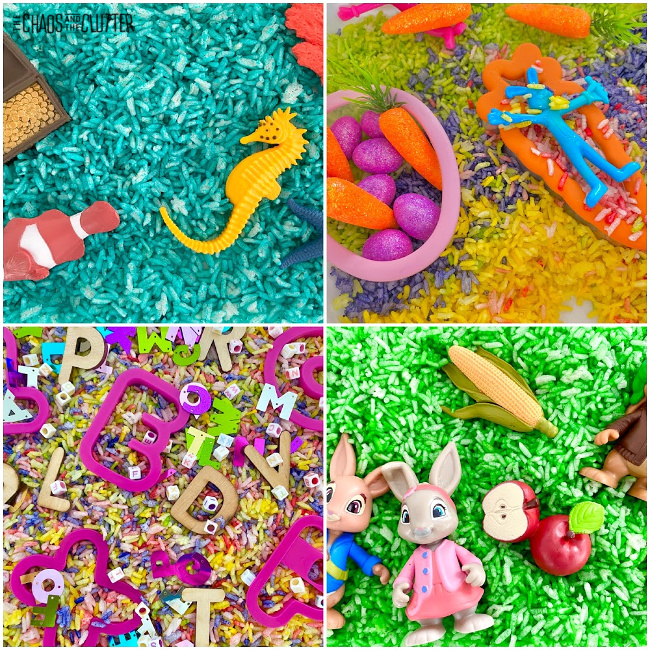 Other helpful information about sensory play:
Other helpful information about sensory play:
- The Mega List of Sensory Bin Fillers and Tools
- How to Create Sensory Bins Your Child Will Love
- Sensory Play Clean Up Tips
- Non-Food Sensory Bin Fillers
- How to Host a Sensory Bin Swap
- Sensory Strewing
Looking for more easy sensory play recipes to use with your kids? Join us for a free five day email series on Sensory Activities and Solutions and get a free sample of our Sensory Play Recipes eBook.
